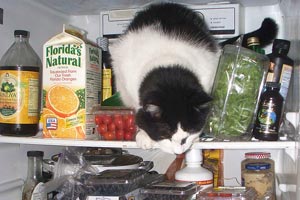
Berbecaru Razvan/Shutterstock
Brrr! It’s been unusually cold in the Bay Area: I had to scrape actual ice off my car last week. (Isn’t that why I left the East Coast in the first place?) We’ve been cranking the space heaters all night at my house, lest we turn into icicles in our sleep. Since our central heat isn’t very efficient (it is itself kind of a giant space heater), I’ve assumed that the room-by-room approach is best. But our power bill soared last month, so I decided to do a little more research.
The short answer is that it depends on how much of your house you’re heating. In general, if you only need one or two rooms to be warm, space heaters will use less energy than central heat. (Unless your central heating happens to be wildly efficient: Geothermal users, I’m looking at you). “But in terms of energy per heat output, small space heaters will rarely ever be as efficient as a central heating system,” says Tom Simchak, a senior policy-research associate at the Alliance to Save Energy. “There would be few situations where putting space heaters in every room and turning them all on would be more efficient than a properly-operating and relatively modern central system.”
If you do opt for a space heater, make sure to get the right kind. If you’re just looking to heat part of a room, choose a radiant heater, which emits infrared radiation that heats up whatever is closest to the unit (i.e., you, your desk, etc.). If you want to heat up the whole room, opt for a convection heater, which warms up the air, suggests the US Department of Energy. Radiant and convection heaters are comparable in price; both can range from about $30 to $130.
Some models use less energy than others; this Eco-Heater, for example, uses only 400 watts, compared with the 1500 watts used by most convection heaters, though its reviews on Home Depot’s website are mixed. Models meant to heat larger spaces often use more energy, so if the room you want to heat is tiny, you could probably get away with one of the less powerful heaters. (Most labels include the heater’s estimated range.) Consumer Search has a straightforward review of various models here.
It’s also worth noting that if your house isn’t well insulated, you’re definitely losing money and wasting energy, no matter what kind of heat you use. The home-energy-savings wizard Michael Bluejay has some great insulation tips here. (Also, some cool miscellaneous heating information, such as why a ceiling fan can actually make a room warmer and how the Japanese heat themselves instead of their rooms.)
Lastly, remember that space heaters can be a fire hazard: According to the US Consumer Product Safety Commission, some 25,000 house fires a year are linked to them. So make sure you read the safety instructions carefully before using any space heater. Check out Consumer Reports‘ safety tips here.










